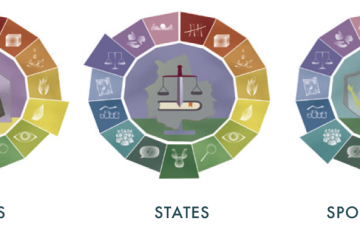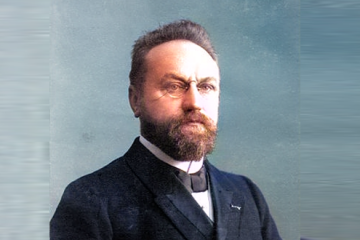We enter Holy Week this year just a few days after the year-anniversary of the UK’s first lockdown. What a difference a year makes. It’s become a staple of the national conversation in recent weeks to observe the transformation in attitudes, plans and expectations from last March up to now, the way that the ongoing Covid-19 crisis has at different moments served to unify and divide, to trigger outpourings of love and of anger, to inspire creativity and provoke dread or despair. In recent weeks, as the vaccination programme in the UK has continued to progress, there has been a sense of new hope emerging (certainly reinforced by the return of spring after a very difficult winter); but even as some of the restrictions here lift, the picture (both worldwide and local) remains deeply uncertain.
Last May, in the early flush of lockdown number 1, I wrote an (in retrospect perhaps somewhat breezy) article envisioning this period as ‘time to grow’, inspired by my own burgeoning enthusiasm for amateur gardening. Ten months on, it’s fair to say that this growth has had mixed results. Of the seedlings I planted last spring, some produced pleasing armfuls of blossom and fruit (especially the tomatoes and the sweet peas, whose aroma graced our kitchen for months), while others yielded little or didn’t even take root. (I don’t think I’ll try aubergines again for a while.) The story has been similar in terms of my personal plans and hopes: whilst some areas of my life have seen real growth, in others it feels as if I have stagnated or even regressed, all the more so as the lockdowns continued. So the prospect of restrictions lifted brings with it both hope (of course) and anxiety: am I really ready for a return to ‘normal’, even if it is a ‘new normal’? Has this last year simply been an exercise in empty waiting, or will it bear fruit that I don’t yet see?
The days of approach to Good Friday and to the miracle of Easter provide some much-needed eternal perspective. This year I have been particularly comforted by the knowledge of the compassion and vulnerability that we see displayed in Jesus’ life, and supremely in his crucifixion. Our God made the deliberate choice to humble himself, to take up our sorrows and our suffering, and to set us free from the intolerable burden of our own failure. He was the ‘man of sorrows’ (Isaiah 53:3) so that we could live in unquenchable hope; he chose to experience the depths of human anguish so that he could stand alongside us in our suffering, and intercede for us as our perfect high priest (Hebrews 4:15). And in his resurrection we find an eternal hope that no earthly trauma or crisis can threaten.
I want to leave you with two works of art that have been helping me to reflect on the vulnerability and compassion of Jesus in the run-up to Easter this year; perhaps they will speak to you this week. The first is the Scottish composer James MacMillan’s Seven Last Words from the Cross (1994), a reflection on Jesus’ moments of greatest vulnerability that is by turns stark (even brutal) and intensely expressive: you can listen to it on Spotify here, or on YouTube (with permission of the label) here.
The second is the poem ‘Jesus of the Scars’ (1917) by Edward Shillito (1872–1948), which I first a year ago and which has haunted me ever since:
If we have never sought, we seek Thee now;
Thine eyes burn through the dark, our only stars;
We must have sight of thorn-pricks on Thy brow,
We must have Thee, O Jesus of the Scars.The heavens frighten us; they are too calm;
In all the universe we have no place.
Our wounds are hurting us; where is the balm?
Lord Jesus, by Thy Scars, we claim Thy grace.If, when the doors are shut, Thou drawest near,
Only reveal those hands, that side of Thine;
We know today what wounds are, have no fear,
Show us Thy Scars, we know the countersign.The other gods were strong; but Thou wast weak;
They rode, but Thou didst stumble to a throne;
But to our wounds only God’s wounds can speak,
And not a god has wounds, but Thou alone.
- Childlike faith? - December 18, 2024
- God with us - December 19, 2023
- Art in times of crisis - October 3, 2022


